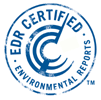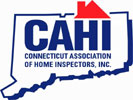Structural
Foundation Walls: Foundation walls should be checked for evidence of deterioration, dampness and movement. Limited dampness from slow moisture migration can be anticipated with older foundation walls. This will often result in minor surface deterioration (efflorescence). Semi-annual inspections allow for monitoring of this situation. Cracks and voids should be filled from the exterior and the interior to help prevent seepage. Filling cracks from the interior allows easy monitoring of movement between inspections. Access hatches should be provided to all crawl space areas.
Grading: The grading immediately adjacent to the house should be checked to ensure a slope of one inch per foot for the first six feet away from the house (where practical). Window wells should be cleaned and covered.
Wood Framing: Exposed wooden structural components in the basement should be checked for evidence of rot and insect infestation. Deterioration usually results in sagging structural components and settlement of the framing/structure.
Wall and Ceiling Surface Cracks: Wall and ceiling surface cracks should be monitored for evidence of significant movement. Minor movement due to normal settling and shrinkage should be anticipated. Amend the soil grading, clean gutters and extend all down spouts/leaders on the exterior of the house, as a method of preventing further settlement, prior to repairing cracks.
Door Frames: Doorframes should be checked to determine if they are square and plumb. Doorframes showing significant movement over a six-month period are normally indications of more serious problems.
Lubricate all windows and doors for ease of operation.
Have the house inspected for termites and other wood destroying insects by a licensed inspector.
Deck: Inspect your deck to be sure there are no defects, loose hand-railings, broken stairs or wood-to-earth contact as this would encourage insect infestation and rotting wood. Spring is a good time to apply sealer your deck. Clean the surfaces using detergent or deck cleaner, and when it's dry, apply fresh sealer. Use a waterproof wood preservative and make sure it includes a fungicide and a mildewcide. Be sure to treat the top and bottom of all components. Treat the ends of the wood too, as the ends usually absorb the most moisture.
Prune trees and clear bushes (before buds appear) as required to prevent insect and vermin access to the roof and for moisture clearance for the house.
Test the "force" setting on your electric garage door opener(s) (when applicable). If the door(s) does not reverse "readily", the force is excessive and requires adjusting.
Look at the garage door springs, cables, rollers, pulleys and other door hardware for signs of wear and/or deterioration. Make any appropriate repairs as required.
Seal asphalt driveways.
Heating and Cooling Systems
Forced Hot Air Systems: Replacement filters on forced-air systems should be checked every 6-8 weeks and changed as needed. Electronic filters should be checked monthly and cleaned per the manufacturer's recommendations. Care should be taken to ensure the interior components are installed in the correct orientation after cleaning. Noisy blower sections should be brought to the attention of a technician. All types of furnaces should be inspected by a qualified, licensed technician every year to ensure that the system operates at peak performance levels, all the components are operating properly and no connections are loose or burned.
Gas Furnaces and Boilers: If gas odors can be detected, call the gas company immediately. Do not turn on any electrical equipment or use anything with an open flame. Gas furnaces and boilers should be cleaned and serviced annually. The exhaust pipe should be checked for loose or corroded sections. The heat shield (located where the burner enters the heat exchanger) should be checked to ensure that it is not loose or corroded. Burn marks around the heat shield or soot on the front may indicate a draft or combustion problem. A qualified, licensed technician should be contacted if these signs are observed.
Hot Water Heating Systems: Radiators and convectors should be inspected annually for leakage (particularly at the valves). Radiators should be bled of air annually, and as necessary during the heating season. Circulating pumps should be lubricated twice during the heating season. Expansion tanks should be drained annually.
Electric Heat: Electric furnaces and boilers should be inspected by a qualified, licensed technician every year to ensure that the system is operating at peak performance levels, all the components are operating properly and no connections are loose or burned. The fuses or circuit breakers in some electric systems can be checked by the homeowner. Electric baseboard heaters should be inspected to ensure an adequate clearance from combustible materials and they are kept clean. Baseboard heaters that have been mechanically damaged should be repaired or replaced. Outlets should not be installed directly over electric strip heaters.
Oil Furnaces and Boilers: Oil systems should be checked by a qualified, licensed technician on an annual basis. Oily soot deposits at registers of forced-air systems may indicate a cracked heat exchanger. A technician should be contacted. The exhaust pipe from the furnace or boiler should be checked for loose connections or corroded sections. The barometric damper on the exhaust pipe should rotate freely. The chimney clean out should be clear of any debris. The oil tank should be inspected for leaks/seepage. Soot on the front of the furnace or boiler may indicate a draft or combustion problem. A qualified, licensed technician should be contacted.
Wood Stoves: Wood stove chimneys and flues should be checked for creosote build-up and cleaned at least annually (more frequently depending upon use). Clearance to combustible materials around wood stoves should be maintained at all times. If there is any doubt about the safety of a wood stove, contact the city building inspector immediately.
All chimneys and flues should be checked for performance.
Heating Ducts: Have your ducts cleaned at least every 3 to 4 years, this keeps your furnace clean and will increase life expectancy. Make sure your ducts have no cracks or leaks in the ductwork and tape/cover with a mastic sealant were needed.
Water Heater: Drain tank at least every year and flush it out. Remove the "sacrificial rod" and soak in vinegar, then scrape off scales.
Air Conditioning: Check filters every month. Have annual system maintenance done one month before the air conditioning season begins. Keep the area around the condensing unit and around the compressor unit free of debris.
Humidifiers: Water levels in humidifiers should be checked and adjusted monthly. Interior components should be replaced on an as needed basis. The pad on drum type humidifiers should be replaced annually. The water supply to humidifiers should be shut off for the summer months and activated for the heating months. On systems with air conditioning or a heat pump, the damper in the humidifier ductwork should be closed during the cooling season and opened during the heating season.
Electrical & Electrical Systems
Electrical System: Examine the electrical panel(s), wiring and electrical components for evidence of overheating. The breakers in the electrical should be "exercised" (turned on and off) to ensure that they do not stick.
To prevent power outages, be sure that there are not too many appliances plugged into one circuit. Install outlets where extension cords are required (extension cords are for temporary usage only).
Replace smoke detector batteries, or, if hard-wired, test smoke detection system regularly.
Plumbing System
Check and service the well water pump and storage tank (if applicable). Have the water quality tested.
Have the septic tank inspected and pumped (if applicable). Properly sized septic tanks should be pumped and inspected every 1 1/2 - 2 years.
Avoid flushing any products other than toilet paper down the toilets. Check for corrosion and leaks. Properly sized septic systems should be cleaned every 1 1/2 years. Repair all drips and running toilets to prevent additional stress on septic systems and for better water conservation.
Appliances
Microwave: Do not use pans or dishes that are metal or have a metallic trim or paint. Only use mild soap and/or baking soda to clean the interior (abrasive cleaners or scouring pads can damage the lining).
Refrigerator: Clean the interior shelves, shell and gaskets every 3 months. Once a year, clean the coils on the back or underneath.
Range & Oven: To avoid damaging the burners, do not use extra-large and heavy cooking pots or pans. If you have a self-cleaning oven, do not use any other method to clean it. Clean range hood vents.
Garbage Disposal: To clean the disposal, push a full tray of ice cubes through it while running cold water. Always remember to run water during use and for at least two minutes after you finish. This prevents stoppages.
Washer & Dryer: Clean the lint screen after each load of clothes has been dried and the unit is empty. To adjust the level of your washing machine, turn the legs clockwise to lower them or counterclockwise to raise them. The water supply to the washing machine should be turned off after every load of laundry. We recommend installing a pan and a drain under the washing machine to help prevent flooding in the event of leaks, spills or overflows. We also recommend metal hoses for the clothes dryer's exhaust to help prevent fires from lint accumulations and/or plastic hoses. Make sure dryer vents are clean and clear.
Hot Tub/Spa: Keep a proper water level. Consult your spa company for suggestions about maintaining your particular system.
Replace smoke detector batteries, or, if hard-wired, test smoke detection system regularly.


